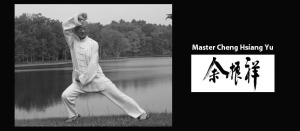I had the pleasure of sitting down to dinner with two prominent architects who had built their firm from the ground up. Over a thirty year expanse they managed to transition from their garage to one of the most respected architects in the country.
As with many professionals from their industry, this firm had to learn how to work in teams of all shapes and sizes as well as a wide variety of clients: some of whom were hands off and extremely supportive, while others who were very opinionated and involved at various stages of a project’s evolution.
During the dinner the conversation the challenge of working with opinionated clients arose. It was noted that sometimes the client who has the strongest ideas on the aesthetic tone of a design can be the most troublesome.
“So what do you do in situations like that?” I asked curiously, recalling a recent Kluge prospect who was so bull headed we decided not to bring him on.
“I just nod my head a lot.” Was the quick response from the architect.
“You nod your head and then what happens?” I asked.
“I nod my head and then I get on with the job once they get distracted. Now don’t get me wrong, I love hearing opinions from my clients. It is great to have their participation. But often you find their attention waivers and you have to guard against those dogmatic clients who have bad taste. It is one thing to come up with the ideas, but the real challenge is in the execution. It takes talent to know when someone’s opinion is wrong and it takes experience to know how to deal with them. Obviously if they are signing the checks, you can’t tell them to jump on their neck. So I just nod a lot and then go about my own business once they get busy. ”
I was struck by the simplicity of the answer and calculated how many hours of debate and frustration could be saved by acknowledging opinions by the various steak holders but letting the underlying beauty and design objectives be the anchor. Unlike architects digital design agencies have the immediacy of an audience to guide a project, which is why incorporating a user experience strategy is so important.
The whole conversation reminded me of what my Tai Chi teacher used to say about the tree that does not bend being the one that is broken in the storm, which was a reference to Lao Tzu’s Tao Te Ching.
A man is born gentle and weak.
At his death he is hard and stiff.
Green plants are tender and filled with sap.
At their death they are withered and dry.
Therefore the stiff and unbending is the disciple of death.
The gentle and yielding is the disciple of life.
Thus an army without flexibility never wins a battle.
A tree that is unbending is easily broken.
The hard and strong will fall.
The soft and weak will overcome.
(Tao Te Ching, LXXVI)


